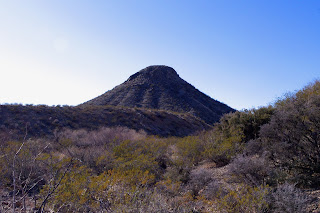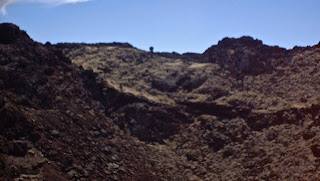Valles Canyon - Sierra de las Uvas

I haven't been here in several years, but this used to be one of my favorite places to visit. It was a definite destination for out of towners as well. The reason: it was a short easy walk to a couple of fantastic petroglyph sites. The old way ( as described in Greg Magee's Hiking Guide to Dona Ana County) to get in here was to take the Barksdale Road from NM 185 just north of Border Patrol checkpoint. The first pitch down into Broad Canyon ( about 10 miles in)was always pretty terrifying: steep,narrow,rough and with a substantial drop-off should you go over the edge, I remember steeling my nerves for every descent and ascent. At a subsequent crossing of Broad Canyon we had to find a place to park,then slip under a barbed wire fence( my mom loved that) and walk downstream to the confluence with Valles Canyon. I remember being so amazed and delighted when we started seeing the petroglyphs and grinding holes here. I could hardly believe we could just come out here and wander around on our lonesome at an archaeological site. Back in the east where I come from, it seems that anything of any interest has got a fence around it , three guides breathing down your neck, and 500 other people paying for the privilege of seeing whatever it might be. We walked up Valles Canyon a short ways and it only got better. The rock art here was much more accomplished( and most likely much older ).
The new way ( as described in Greg Magee's Day Hikes and Nature Walks in the Las Cruces- El Paso Area)of getting here is from the west. The hike starts at a large clearing off the (paved) Corralitos Road know as Valles Tank where there is a corral and ample room to park. Some of the cows out here look a little wild and ornery,so keep your head up. There is one spot where it may be necessary to climb down a small dry waterfall( I'm glad I took my parents the old way). There is also fence across the stream bed.Look for a gate on the south side instead of crawling under Even though this is a longer hike, it should be the one you use if you visit. I think it is the preferred route now because of private property issues involved using the old way.NOTE: forgive the image quality. These were all taken many years ago with an Advantix film camera. On subsequent visit I have been either without camera or just not taking photos for reasons I can't quite explain.
Labels: hiking, Organ Mountains/Desert Peaks National Monument, petroglyphs

















































